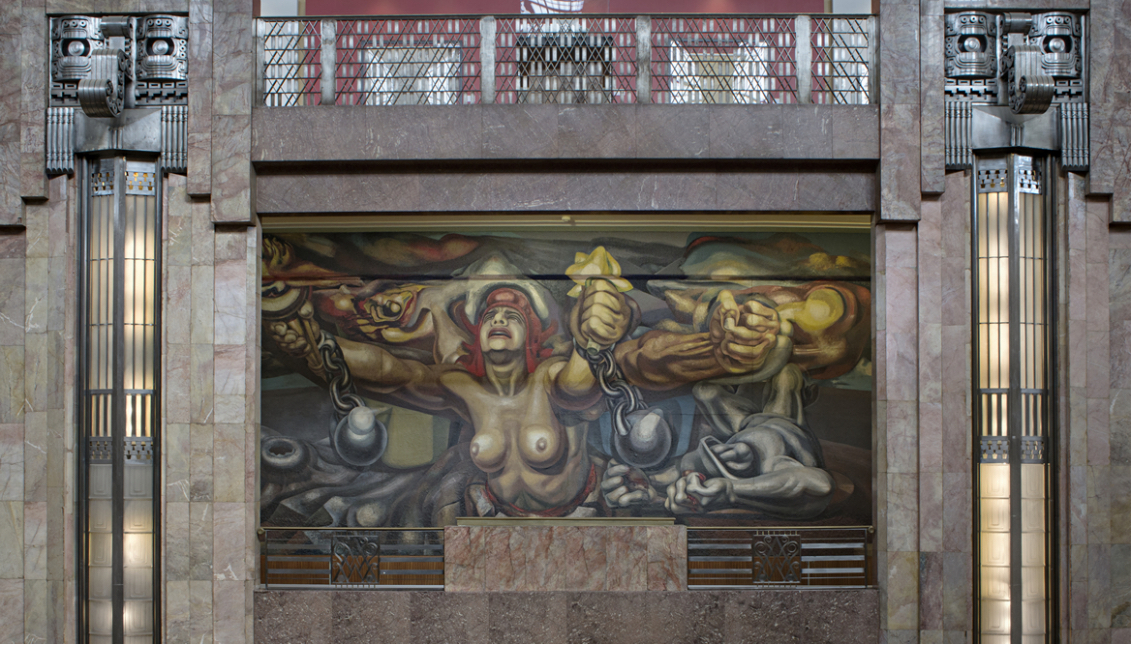
The validity of urban art in contemporary politics
MORE IN THIS SECTION
I like to believe that cultural manifestations are more than an ideological materialization of a site-specific moment. When we talk about a cultural territory we are actually self-imposing some sort of boundaries and being consequent with the delimitation of human freedom.
When it comes to art and the urban reach of artistic movements, the history has been rather impressive.
Ever since the archeological discoveries of Egyptians wall interventions, the massification of political propaganda thanks to the printing press and the urgent need to define the gangster’s territory at the beginning of the 20th century, the appropriation of the urban space has been a constant in human endeavors. Take a look at the evolution of architecture, for example.
In Latin America the significance of urban art as a dogmatization process (ever since the Olmec civilization to the colonials forcing the indigenous people to construct their own churches) has been an important cultural process, especially during the Mexican Revolution and the muralism that was born afterwards. It was a fundamental quest of identity that took large pieces of concrete to demonstrate the autonomy and the urge of freedom in a population that had almost forgotten what that word even meant.
Rivera, Siqueiros and Orozco where well aware of the visual force that large pieces of art could have over the spectator, specially if a political and social background was pushing from behind, and those where the engines that allowed a cultural movement to leave an artistic testimony.
During the Two Great Wars, very few artistic representations where allowed in public spaces considering, well, that the public space was being bombed and destroyed in a great scale. But during the decline of the Second World War, the first anonymous signature appeared as a line-drawing doodle, known as the Kilroy was here graffiti, debatably associated with GIs in the 1940’s.
After the counter-cultural movement that emerged strongly in the 1960’s, the appropriation of the public space as a social and political scenario was crucial in the overturning of the public demand and the challenge of power. Especially in the artistic stratum, many of the public performances (considered Happenings so far) made it possible to derive the artistic product into an ephemeral and circumstantial work, characteristics that urban and street art would later acknowledge.
But was during the 1980’s that the New York Graffiti Boom turned the tables for urban art. Murals in train cars in the Bronx, which was beautifully documented in Tony Silver’s Style Wars (1983); the deep relationship between Hip Hop and counter-cultural movements inside marginalized populations; the stylistic differentiation between Tags, Bombs and Murals, with the subsequent addition of new materials as stencils and posters.
Important characters where born in the New York Scene, especially through the conceptualization of visuals and the text-based interventions, such as Richard Hambleton, Keith Haring and Jean-Michel Basquiat.
The polemic statements of public property violation and several moral and aesthetic conflicts made street art interventions to be considered vandalism, until the mainstream embraced the potential of the artistic collective as a marketing fertile ground, specially thanks to the Andy Warhol’s management.
But graffiti reached other social interests, being considered a youth curiosity. An educational platform took place in Philadelphia, for example, known as The Mural Arts Program, founded in 1984 with the farsightedness of putting the artistic talents of graffiti artists into the welfare of the city landscape, earning it the name City of Murals.
The commercial breakthrough of street art began with the signature of works and their relocation to art galleries and the earning of economical recognition. Nowadays, urban artists remain in the anonymity but their works are handled by well-established artistic organizations and shown in collective exhibitions in the Tate, MoMa and such, allowing them to earn a living and keep intervening the streets. Just take a look at Banksy, Florentijn Hofman, Os Gemeos, Art is Trash, The Black Pacifier, BLU, C415, Alice…
The most frequent question that critics mention is ‘Why do they keep painting in the streets’? Well, for a cultural movement with such a renegade heritage, abandoning the streets is not an option, particularly when it comes to social complaints and the possibility to reach wider audience.
Take a look at Plastic Jesus’ latest work around the Donald trump Hollywood Star: a ‘15cm high concrete wall topped with razor wire, miniature US flags and includes 'Keep Out' signs written in both Spanish and English’ according to the BBC and the images that the artists has led free on the internet. This is a public, all-age-allowed and free manifestation of a general sentiment with the visual conceptualization of a political speech.
This is the time when art is most necessary as an escape valve, quoting Lucy Lippard. This is the time when artistic representations and interpretations will become testimony of what we did and, in the saddest of circumstances, what we could have done.






LEAVE A COMMENT:
Join the discussion! Leave a comment.